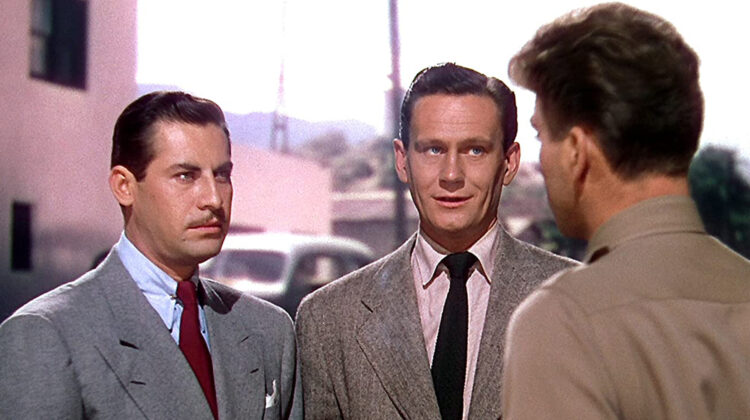
I first heard about this little gem of a film from watching Mark Rappaport’s Silver Screen: Color Me Lavender (1997). Desert Fury (1947) is a queer, hard as nails melodrama best described as a sort of aesthetic fusion between the films of John M. Stahl and those of Robert Siodmak. Robert Rossen’s screenplay is overflowing with innuendos and plot-twists that keep Desert Fury compulsively watchable. This isn’t an easily classifiable film, but I have nonetheless been surprised to read people refer to Desert Fury as Film Noir, or as a Western, and sometimes even both. First and foremost Desert Fury is a psychosexual melodrama. Any inclinations Desert Fury has towards other genres are either circumstantial or highly superficial.
Every scene between Mary Astor and Lizabeth Scott is electrifying. However, what sticks out about Desert Fury isn’t the veiled incest between mother and daughter, but the apparently “open” relationship between Wendell Corey and John Hodiak. In Silver Screen Rappaport devotes a lot of time to the queer relationships Walter Brennan characters have with their heroic counterparts and yet nothing in those films comes close to what audiences can find in Desert Fury. Rossen has barely disguised the homosexual relationship between the film’s antagonists and it’s fantastic. Add to that the fact that Desert Fury is packed wall to wall with the romantic themes of the incomparable Miklós Rózsa, providing a counterpoint to Rossen’s machine-gun fire dialogue. Miklós Rózsa’s cues also help to accent the queer reading of this film, suggesting the modus operandi of Rainer Werner Fassbinder and Todd Haynes.
Desert Fury isn’t a great film, it’s simply one of the most fascinating American films of the post-war era. Besides, it’s always nice to see Burt Lancaster break out of his tough guy mode in his forties films. Even if Lancaster is overshadowed by Lizabeth Scott and Mary Astor, this is still a “must-see” film for Burt devotees.
